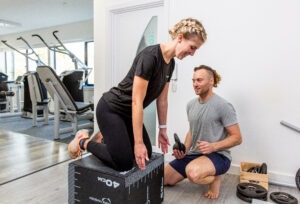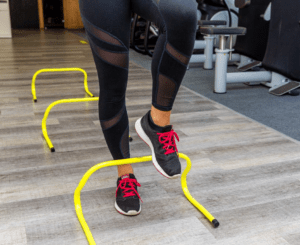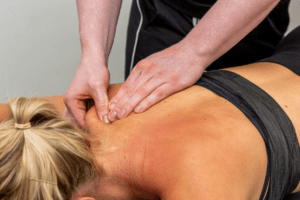Introduction
This blog will aim to explore the relationship between exercise and menopause. It will aim to highlight the benefits of staying active during this significant time and also provide some tips and guidance for incorporating exercise into daily routine.
What Is menopause?
Menopause is a natural and inevitable phase of a woman’s life, marking the end of her reproductive years when their periods stop for 12 consecutive months. Menopause typically affects women between the ages of 45 and 55, however, this can vary from woman to woman. The transitional phase leading up to menopause, when a woman’s periods become irregular and unpredictable is known as peri-menopause.
What Causes Menopause?
As a woman ages her hormone levels are changing. The ovaries produce fewer eggs and oestrogen levels begin to gradually reduce. This is what leads to the symptoms that are commonly related to menopause.
What are the symptoms of Menopause?
It is important to note that the symptoms women experience are different. The typical symptoms include:
- Mood Swings
- 2. Brain fog
- Hot flushes
- Vaginal dryness
- Painful joints
- Changes to skin, this can be dryness or hormonal acne
- Decreased bone density
- Changes in body composition and weight gain
Does Exercise help with menopause?
Exercise has been shown to be a powerful tool to help women manage the changes and symptoms of menopause, as well as to help them maintain overall health and well-being. Exercise has proven to have many physiological benefits to peri and menopausal women which include:
- Hormonal Regulation: : Exercise can help regulate hormonal fluctuations by increasing the production of endorphins, which improve mood, and reducing stress hormones like cortisol. This can help manage mood swings and anxiety associated with menopause.
- Weight Management: As metabolism tends to slow down during menopause, women often experience weight gain. Exercise, particularly a combination of cardio and strength training, can help burn calories.
- Bone Health: Menopause increases the risk of osteoporosis due to decreasing oestrogen levels. Weight-bearing exercises, such as walking, jogging, and weightlifting, can strengthen bones and reduce the risk of fractures.
- Stress Reduction & Improved cognitive Function: Exercise is associated with improved cognitive function and memory, which can help combat “menopausal brain fog.”
- Improved Cardiovascular Health: Oestrogen has cardio-protective effects, and its decline during menopause can increase the risk of heart disease. Exercise helps lower blood pressure, improve cholesterol levels, and maintain overall cardiovascular health.
The national recommendations for physical activity are to aim to get at least 150 minutes of moderate-intensity activity or 75 minutes of vigorous-intensity aerobic activity per week. It is also recommended to incorporate at least 2 muscle-strengthening activities per week and generally spend less time sitting and more time moving.
Is exercise harder during menopause?
Some women do find it harder to exercise during this phase of their life. The hormonal changes resulting in the symptoms can have impacts on sleep, mood and can make you generally feel lethargic and demotivated- That is normal. It is important to not be too hard on yourself and try to stick to a routine. Consistency is key, even if it is little and often. Research has shown that being physically active during menopause can help to improve symptoms women may be experiencing.
What Exercises are the most beneficial for Menopause?
It is important to incorporate a combination of different exercises:
- Cardiovascular
- Strength Training
- Flexibility
- High-Intensity Interval Training (HIIT)
Tips from tops:health
As we are dedicated to help and support women to maintain their health and well-being through their significant journey into menopause here are some tips for incorporating exercise into your daily routine:
- If you have any questions about exercising during menopause, if you are new to exercise or would like specific guidance regarding exercise. We are happy to help. We will listen to your goals and help to tailor exercise programs that suit your specific needs.
- Choose exercises and activities you ENJOY. This will help you to stay motivated and help to boost your mood.
- Listen to your body
- Remember to Rest
Conclusion
Menopause is a significant period of every women’s life and exercise is a valuable tool for managing the physiological, physical and emotional challenges. Regular exercise helps to regulate hormones, improve bone health and enhance overall health and well-being. By staying active and prioritising your health, you can have the power to make this journey into menopause a more positive experience.



